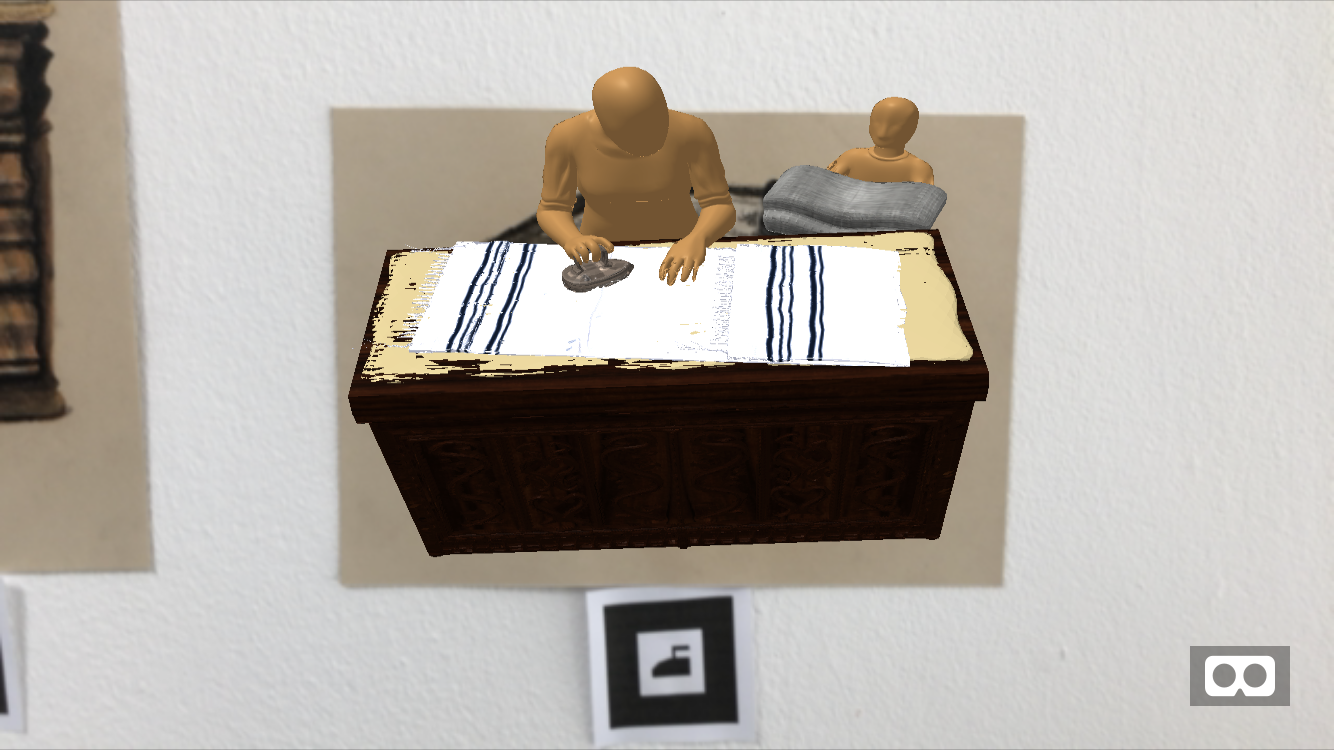On chores, prayer scarves and clothing

To return to the main page click here.
Target:

In this scene the mother is seen ironing a tallit gadol, a traditional prayer garment with her child helping. Children assisting in chores is encouraged and valuable in judaism (1), as in most cultures. It is a natural scene to witness, it is familiar after all. Most people iron their clothing, at least the items that are important or worn for an important event.

The Tallit Gadol
Traditions vary on when someone receives the first tallit gadol in their life. For example, in some communities boys receive it at their bar mitzvah, in others when they marry. There are also different traditions on when to wear it, during which prayers and occasions (2). But in either case it is a very valuable, important garment and a sign of maturity.
The prayer scarf fulfils a religious obligation to wear tassels (tzitzit) on certain items of clothing (3). There are requirements for which clothings must have these tassels attached to them and how the tassels should be made.

Tallitot are generally treated with a lot of care. So while the child may be bringing more laundry for their mother to help her, it is less likely that she would let them try their hand at ironing this particular item.

Religious clothing (4)
“Recognisably” jewish clothing has evolved and changed quite a bit over the centuries, some items however are generally associated with observant jewish folks. Observant jewish clothing follows jewish law (Halacha (5)), a collective body of jewish jurisdiction and rulings over the various aspects of life. While some clothing rulings are universal (for example to not mix plant fibre and animal fibre (6)), others are gendered.
The famous skullcap (7) (kippah or yarmulke) is one of the first associations with religious clothing, even if it is not required in particular. Many people chose to cover their head to show their their reverence to God (8).
There are many items and styles of clothing that are traditional but not necessarily obligatory. It is commonly encouraged to dress modestly, but how that looks traditionally differs between the genders; for example, a jewish woman might choose to wear a so called tichel (9) (a headscarf) or a jewish man might choose to wear covering clothing and a tallit katan, an undergarment that fulfils the obligations for a clothing item to be adorned with tassels. Jewish clothing is as diverse as jewish people are.

Links:
- https://www.myjewishlearning.com/article/choosing-to-do-chores/
- https://www.chabad.org/library/article_cdo/aid/536572/jewish/When-Is-a-Tallit-Worn.htm
- https://en.wikipedia.org/wiki/Tzitzit
- https://www.myjewishlearning.com/article/jewish-clothing/
- https://en.wikipedia.org/wiki/Halakha
- https://en.wikipedia.org/wiki/Shatnez
- https://en.wikipedia.org/wiki/Kippah
- https://www.myjewishlearning.com/article/kippah/
- https://www.jewishvirtuallibrary.org/tichel




